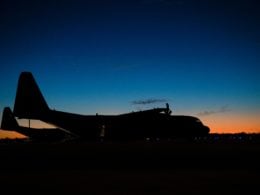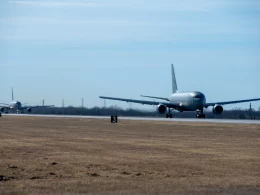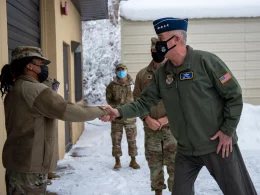DYESS AIR FORCE BASE, Texas —
The 317th Airlift Wing participated in Exercise Storm Flag 24-05, a 14-day joint-credited exercise, focusing on cargo and personnel delivery at Pope Army Airfield, North Carolina, Alexandria International Airfield and Fort Johnson, Louisiana, from March 3-16, 2024.
The exercise was strategically crafted to integrate AMC Agile Combat Employment operations, employing a well-crafted scheme of maneuver to generate formidable combat air power. This first iteration of Exercise Storm Flag showcased the success of joint operations, with mobility Airmen safely delivering cargo and personnel from the 82nd Airborne Division.
Planning for Storm Flag prioritized the Air Force’s desired training objectives of ensuring advanced missions like wet wing defuels, combat offloading methods and optimized airdrop logistics. Despite challenges, Storm Flag achieved a notable 100% first pass success rate for equipment drops.
“Storm Flag provides an effective exercise platform for joint partners to plan and execute a complex mission. The ability to train with international partners and allies allows us to share tactics, techniques and procedures to better integrate operations in the future,” said U.S. Air Force Lt. Col. Dave Mackintosh, 40th Airlift Squadron director of operations.
The goal of Storm Flag is to provide combatant commanders with a force capable of exploding into any theater, enabling them to swiftly converge on the point of attack with agility and responsiveness. Testing our capabilities in controlled scenarios develops muscle memory for seamless real-world application, preparing our forces for contested environments.
“One of the biggest lessons learned was to identify irreversible decisions early and ensure that decision makers had all the information they needed to make the final determination to maximize the probability of mission success,” said Mackintosh. “Planning ahead and rehearsing those decisions allowed for flexible timelines, enabling us to adapt to contingencies, ultimately enhancing our ability to respond more efficiently to challenges in the future.”










